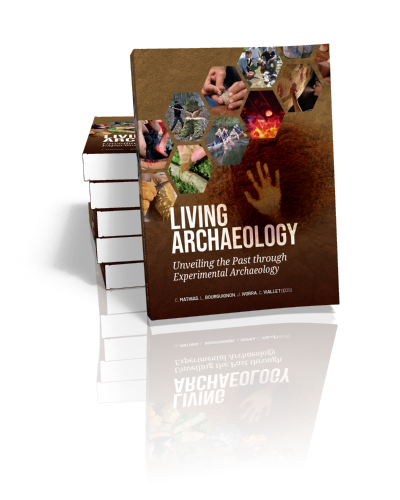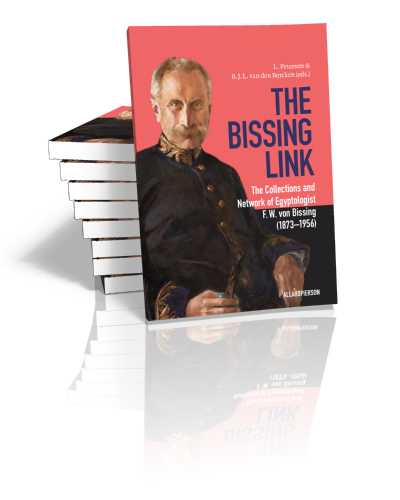An Archaeological Portrait of Life in a Bronze Age Cypriot Village
Scientific Explorations at Politiko-Troullia
Steven E. Falconer and Patricia L. Fall | Forthcoming
Archaeological research conducted at Politko-Troullia, Cyprus offers a portrait of life in a prehistoric Cypriot village during the formative centuries preceding the first cities on the island. We tell the story of an international team…
Archaeology Of Coastal Settlements / Archéologie des peuplements littoraux
HOMER 2021 Conference
Edited by Catherine Dupont, Anna Baudry & Marie-Yvane Daire | Forthcoming
This volume presents the proceedings of the HOMER 2021 international conference, held in September/October 2021 on the Island of Oléron, France. The conference focused on recent advances in coastal and island archaeology across a wide…
Gesellschaft und Monumentalität zwischen Nordatlantik und Ostsee 4500–1800 v. Chr.
Johanna Brinkmann | Forthcoming
Kurz vor 4000 v. Chr. erreicht der Neolithisierungsprozess mit den Britischen Inseln und dem westlichen Ostseeraum den Norden Europas. Die Einführung der neuen Subsistenzweise bringt tiefgreifende Veränderungen, zu denen mit einer gewissen zeitlichen Verzögerung auch…
Trajectoires techniques en Préhistoire récente
L’industrie lithique du Néolithique final et du début de l’Âge du Bronze dans le Nord de la France
Emmanuelle Martial | Forthcoming
Cet ouvrage propose la première synthèse sur la place et l’évolution des industries lithiques du nord de la France, entre le IIIe millénaire et la première moitié du IIe millénaire avant notre ère. Ce travail…
Living Archaeology
Unveiling the Past through Experimental Archaeology
Edited by C. Mathias, L. Bourguignon, J. Ivorra, C. Viallet | Forthcoming
Despite the wealth of material remains uncovered by archaeology, our understanding of how people in the past lived, worked, and thought remains fragmentary, especially fort he most ancient times. Many aspects of ancient technologies and…
The Bissing Link
The Collections and Network of Egyptologist F. W. von Bissing (1873–1956)
Edited by Lars Petersen & Ben van den Bercken | Forthcoming
One of the largest collections of Egyptian and Sudanese antiquities worldwide was accrued by the Egyptologist Friedrich Wilhelm Freiherr von Bissing (1873–1956). As a scholar, university professor, and politically engaged Prussian nobleman he was an…
The Winthir Collection
A documented osteological collection from Central Europe
Edited by Michaela Harbeck & Christof Paulus | Forthcoming
The Winthir Collection is one of the few identified skeletal collections from the 19th century, offering a rare insight into the lives of 245 individuals recovered from a long-forgotten section of Winthir Cemetery in Munich,…
An Archaeological Portrait of Life in a Bronze Age Cypriot Village
Scientific Explorations at Politiko-Troullia
Steven E. Falconer and Patricia L. Fall | Forthcoming
Archaeological research conducted at Politko-Troullia, Cyprus offers a portrait of life in a prehistoric Cypriot village during the formative centuries preceding the first cities on the island. We tell the story of an international team…
Archaeology Of Coastal Settlements / Archéologie des peuplements littoraux
HOMER 2021 Conference
Edited by Catherine Dupont, Anna Baudry & Marie-Yvane Daire | Forthcoming
This volume presents the proceedings of the HOMER 2021 international conference, held in September/October 2021 on the Island of Oléron, France. The conference focused on recent advances in coastal and island archaeology across a wide…
Gesellschaft und Monumentalität zwischen Nordatlantik und Ostsee 4500–1800 v. Chr.
Johanna Brinkmann | Forthcoming
Kurz vor 4000 v. Chr. erreicht der Neolithisierungsprozess mit den Britischen Inseln und dem westlichen Ostseeraum den Norden Europas. Die Einführung der neuen Subsistenzweise bringt tiefgreifende Veränderungen, zu denen mit einer gewissen zeitlichen Verzögerung auch…
Trajectoires techniques en Préhistoire récente
L’industrie lithique du Néolithique final et du début de l’Âge du Bronze dans le Nord de la France
Emmanuelle Martial | Forthcoming
Cet ouvrage propose la première synthèse sur la place et l’évolution des industries lithiques du nord de la France, entre le IIIe millénaire et la première moitié du IIe millénaire avant notre ère. Ce travail…
Living Archaeology
Unveiling the Past through Experimental Archaeology
Edited by C. Mathias, L. Bourguignon, J. Ivorra, C. Viallet | Forthcoming
Despite the wealth of material remains uncovered by archaeology, our understanding of how people in the past lived, worked, and thought remains fragmentary, especially fort he most ancient times. Many aspects of ancient technologies and…
The Bissing Link
The Collections and Network of Egyptologist F. W. von Bissing (1873–1956)
Edited by Lars Petersen & Ben van den Bercken | Forthcoming
One of the largest collections of Egyptian and Sudanese antiquities worldwide was accrued by the Egyptologist Friedrich Wilhelm Freiherr von Bissing (1873–1956). As a scholar, university professor, and politically engaged Prussian nobleman he was an…
The Winthir Collection
A documented osteological collection from Central Europe
Edited by Michaela Harbeck & Christof Paulus | Forthcoming
The Winthir Collection is one of the few identified skeletal collections from the 19th century, offering a rare insight into the lives of 245 individuals recovered from a long-forgotten section of Winthir Cemetery in Munich,…
Browse by subject












